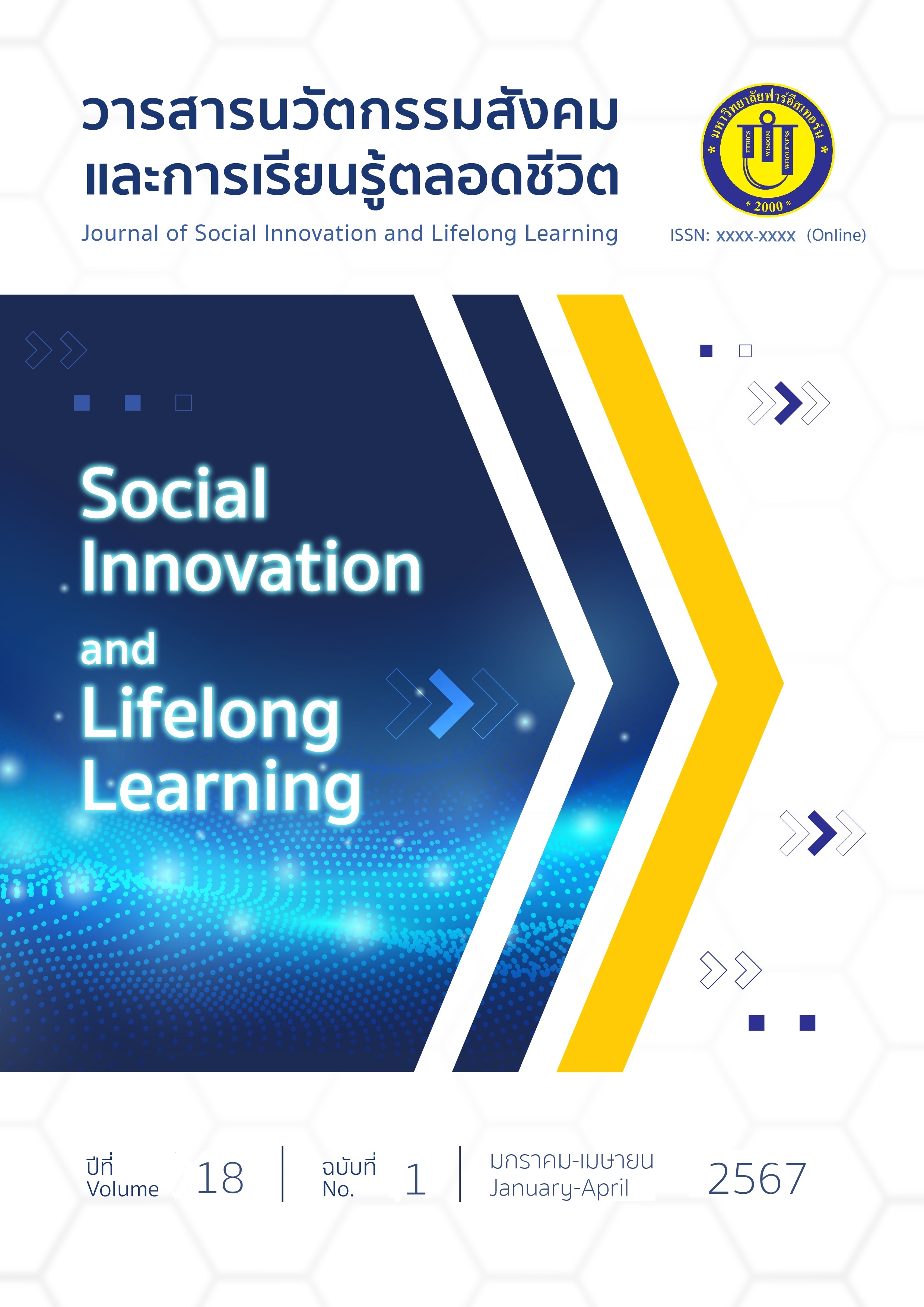The Exploration of Narratives and Heritage Interpretation in Chiangmai for the Development of Her Highness Princess Dara Rasmi Cultural Tourism
Main Article Content
Abstract
The purpose of this article is to 1) analyze the narrative and the interpretation of Princess Dara Rasmi in historical tourist attractions in Chiang Mai related to the Princess or related to Her royal family, and 2) propose guidelines for the development of Princess Dara Rasmi cultural tourism. Field research is conducted to collect the data, which were then processed by the “thematic analysis” method. The findings reveal that the attractions provide information about the princess from many perspectives, including her biography, her works, her private life, her lineage, and her venerable status. A variety of strategies are used in the interpretation process including banner explanations, images, models, and videos. It can be concluded that the narrative of the princess is communicated in the city’s cultural heritage tourism attractions. However, the city should introduce more varieties of cultural tourism activities and have a concrete plan to communicate the new category of tourism to the public. Moreover, collaboration with the related stakeholders is helpful to maximize the development of this special interest tourism.
Article Details

This work is licensed under a Creative Commons Attribution-NonCommercial-NoDerivatives 4.0 International License.
1. Any views and comments in the Journal of Social Innovation and Lifelong Learning are the authors’ views. The editorial staff have not to agree with those views and it is not considered as the editorial’s responsibility.
2. The responsibility of content and draft check of each article belongs to each author. In case, there is any lawsuit about copyright infringement. It is considered as the authors’ sole responsibility.
3. The article copyright belonging to the authors and The Far Eastern University are copyrighted legally. Republication must be received direct permission from the authors and The Far Eastern University in written form.
References
กุณฑล เพ็ชรเสนา และ ศิริพร ดาบเพชร (2565). การจัดการแหล่งท่องเที่ยวตามรอยภาพยนตร์ด้วยแนวคิดประสบการณ์การท่องเที่ยว. วารสารบริหารธุรกิจศรีนครินทรวิโรฒ, 13(1), 72-87. https://ejournals.swu.ac.th/index.php/MBASBJ/article/view/14183
กระทรวงการท่องเที่ยวและกีฬา. (2566). สถานการณ์การท่องเที่ยวในประเทศ รายจังหวัด ปี 2566. https://www.mots.go.th/news/category/705
ชาญวิทย์ เกษตรศิริ. (2547). ประโยชน์ของการท่องเที่ยวเชิงวัฒนธรรม. มหาวิทยาลัยสุโขทัยธรรมาธิราช.
บุญเลิศ จิตตั้งวัฒนา. (2548). การพัฒนาการท่องเที่ยวแบบยั่งยืน. เพรสแอนด์ดีไซน์.
ปฏิพล ยอดสุรางค์ และ วีรพงษ์ ไวยทิ. (2565). การสื่อความหมายมรดกวัฒนธรรมบ้านเก่าและเรือนโบราณในเมืองเก่านครลำปาง. วารสารวิจัยและสาระสถาปัตยกรรม/การผังเมือง, 19(2), 35-54. https://so02.tci-thaijo.org/index.php/jars/article/view/246053
ราณี อสิชัยกุล. (2546). การท่องเที่ยวเชิงวัฒนธรรมในเอกสารการสอนชุดวิชาประสบการณ์วิชาชีพ การจัดการการท่องเที่ยว. มหาวิทยาลัยสุโขทัยธรรมาธิราช.
รุจพร ประชาเดชสุวัฒน์, (2549). รายงานวิจัยนาฏศิลป์ล้านนา กรณีศึกษาสมัยพระราชชายาเจ้าดารารัศมี. จุฬาลงกรณ์มหาวิทยาลัย.
อมรรัตน์ เปี่ยมดนตรี และ ศุภกรณ์ ดิษฐพันธุ์. (2558). การใช้วรรณกรรมขุนช้างขุนแผนเพื่อส่งเสริมการท่องเที่ยวเชิงวัฒนธรรมในจังหวัดสุพรรณบุรี. Veridian E-Journal, Silpakorn University, 8(2), 544-555. https://he02.tci-thaijo.org/index.php/Veridian-E-Journal/article/view/72526
อัครินทร์ อังกูรวงษ์วัฒนา. (2561). การพัฒนาการท่องเที่ยวเชิงวัฒนธรรมอย่างยั่งยืน โดยใช้ศักยภาพของภูมิปัญญาท้องถิ่นล้านนา. วารสารนวัตกรรมการบริหารและการจัดการ, 6(3), 11-17. https://so02.tci-thaijo.org/index.php/RCIM/article/view/150706
Beck, L. & Cable, T. (1998). Interpretation for 21st Century. Fifteen Guiding Principles for Interpreting Nature and Culture. Sagamore Publishing.
ICOMOS. (2008). The ICOMOS Charter for the Interpretation and Presentation of Cultural Heritage Sites; ratified by the 16th General Assembly of ICOMOS, ICOMOS.
Ioannides, D., & Ioannides, M. C. (2002). Pilgrimage of nostalgia: Patterns of Jewish travel in the United States. Tourism Recreation Research, 27(2), 17–25. https://doi.org/10.1080/02508281.2002.11081216
Moscardo, G. & Ballantyne, R. (2008). Interpretation and Attractions. Managing Visitor Attractions. Routledge.
Nowacki, M. (2021). Heritage Interpretation and Sustainable Development: A Systematic Literature Review. Sustainability, 13(8), 43-83. https://doi.org/10.3390/su13084383.
Silberman, N. A. (2013). Heritage Interpretation as Public Discourse. In Understanding Heritage (pp. 21–34). DE GRUYTER. https://doi.org/10.1515/9783110308389.21
Smith, M. (2016). Issues in Cultural Tourism Studies (3rd ed.). Routledge.

